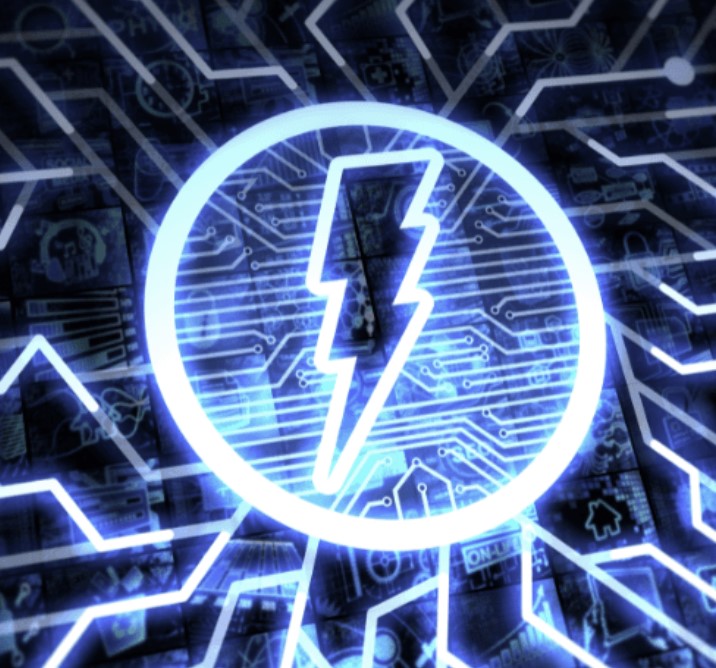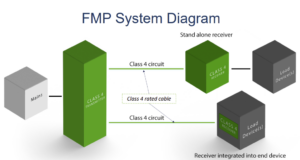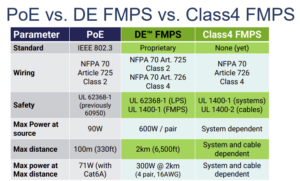
How to Extend Data & Power Over Extended Distances
NEC Class 4 Fault Managed Power Offers Economical Solution for Many Industrial Applications
by Tom Valentine, VP Sales & Marketing, Remee Wire & Cable
May, 2024, Power Systems Design Magazine
A Review of the Circuit Classes
Class 1, 2, and 3 circuits are classified as remote-control, signaling, and power-limited circuits in the National Electrical Code (NEC). The NEC defines such circuits as that portion of the wiring system between the load side of the overcurrent protection device (OCPD) or the power-limited supply and all connected equipment.
These circuits are characterized by their usage and electrical power limitation, which differentiates them from light and power circuits. These circuits are also classified in accordance with their respective voltage and power limitations.
The NEC divides Class 1 circuits into two types: power-limited and remote-control and signaling circuits. Power-limited Class 1 circuits are limited to 30V and 1000VA. Class 1 remote-control and signaling circuits are limited to 600V, but there are limitations on the power output of the source.
Generally, Class 1 remote-control and signaling circuits must meet most of the same wiring requirements for power and light circuits. We commonly use Class 1 remote-control circuits in motor controllers (which operate mechanical processes), elevators, conveyors, and in equipment controlled from one or more remote locations. Class 1 signaling circuits are used in nurses’ call systems in hospitals, electric clocks, bank alarm systems, and factory call systems.
Power limitations differentiate the three main classes of power (Class 1, Class 2 and Class 3). Class 2 is concerned with fire safety, and it provides some protection from electric shock. Class 3 only considers fire safety.
Class 2 and 3 circuits are Limited Energy Circuits which limit the possibilities of ignition or ventricular fibrillation. Devices in these classes must be listed as a Limited Power Source (LPS). Power over Ethernet (PoE) is an example of Class 2.
Class 2 and 3 systems do not require the same wiring methods as power, light, and Class 1 systems. There are cases when a 2-in. separation is required between these systems.
The Limits of Power over Ethernet (PoE)
The PoE standard is covered by IEEE 802.3, and wiring is specified in NFPA 70, Article 725 Class 2. The UL standard is 62368-1. The maximum power at the source is 90W. And the maximum distance is 100 meters or 328 feet. The maximum power at maximum distance is 71W (with Cat 6A).
While these limitations have worked well for many enterprise networks, they do not accommodate the longer distances now required to position many devices beyond the 100m length. The development and growth of IoT or IIoT devices, along with other industrial technology developments, have driven the need to position devices over longer distances.
What is Cl4 (Class 4) and How Does it Work?
The NEC added its first new class of power in over 45 years with its 2023 edition of NFPA 70. Class 4 is defined in a new Article 726, part of Chapter 7, which deals with special conditions. Class 4 power systems are called “Fault Managed Power Systems” (FMPS). They are not power limited and can deliver hundreds of thousands of watts of power.1 Voltage can be up to 450V AC or DC. This may sound dangerous, but FMPS have intelligent controls that limit the amount of energy that can go into a fault, mitigating the risk of fire or shock. It also allows for the installation of Class 4 circuits using methods like power-limited circuits.
The new article in NFPA 70 covers specifications of instrumentation tray cables used to connect alternative energy systems to utility service equipment, as well as Power Class 4 fault managed power systems and cables. Class 4 is the new standard for fault managed power systems, which includes packet energy transfer (PET), Digital Electricity* (DE) and other smart transfer systems, as they were not covered in Classes 2 or 3.
The power systems covered under Class 4 utilize low voltage power for safety and ease of installation. Yet, these systems can transmit nearly 20 times the power of PoE systems, which are limited to 100W, and run over hundreds of meters. PoE runs are limited to 100 meters (328 feet). Therefore, Class 4 systems can utilize a single cable run for both data and power for much longer distances. This eliminates the need for separate cable runs for electric power and the host of parts required for installation (junction boxes, conduits, fittings), and FMPS can reduce the amount of copper used, not to mention the additional labor cost.

This innovative technology leverages pulse transmission to deliver significant power over long distances, in a similar manner as data packets travel over enterprise networks. As a line powering system, it is a means of energizing remote equipment from a centralized location over copper twisted pairs or hybrid cables with Class 4 fault managed power. These types of power systems limit the energy and power available during a fault event. For example, if a person were to touch an exposed wire, the system would immediately shut off before any harm is caused.
Transmitters and receivers continuously monitor line conditions. If there is a fault such as improper wiring, a short circuit, or a person is touching the transmission lines, the system recognizes the condition in milliseconds and halts the transmission of power. The result is “touch safe” electrical transmission at high power levels. This “clean power” also eliminates sags and surges.
Benefits of Fault-Managed Power Systems (FMPS)
- Safety – with low voltage and fault managed shut-off features certified by OSHA’s NRTL lab to use the same wiring practices as Ethernet and PoE;
- Allows hundreds of watts per pair of conductors
- Allows device positioning and cable runs for long distances – thousands of feet
- Reduced copper content – the conductors are typically smaller – 18 to 14 AWG
- Enables remote monitoring and control of power distribution, allowing action to be taken upon external events
- Efficient installation – can be run in the same pathway as Class 2 or 3 circuits, fiber or hybrid cables; eliminates the need to run separate power lines; requires only one cable pull
- No conduit required
- Intelligent control over power use – FMPS can tell the difference between the load and a person in contact with the lines

Class 4 FMPS: Powering Industry 4.0
Fault managed power solutions can drastically reduce the complexity, time and costs associated with edge-based networking deployment. By empowering the freedom and flexibility to locate modular IDF resources anywhere in the industrial environment, a simplified and scalable network is created that solves the challenge of supporting connected industrial devices both today and in the future.2
Industrial facilities face challenges in meeting connectivity demands with 4G LTE, 5G, and WiFi. FMPS offer an economical, efficient, and safe solution for powering remote devices, such as radios and access points. FMP Systems also enable IoT technologies that are driving automation, manufacturing, and logistics.
There are a multitude of applications for CL4 power systems and cabling in the industrial environment. Some examples include:
- Distributed Antenna Systems (DAS) – providing WIFI in factories, railway tunnels, etc.
- Power over Ethernet (PoE) – 328-foot limit, plus extended distances
- LED lighting
- Security cameras
- Access control – card readers, door entry systems, etc.
- Wireless Access Points (WAPs)
- Building Automation Systems (BAS) – HVAC, lighting, security, etc.
- Data Centers
- IoT sensors
- Indoor agriculture
Remee is experienced in manufacturing ruggedized cable for harsh industrial conditions. They provide a full selection of standard cables, and specialize in modifying standard cables, as well as custom designed cables. Here are a few case studies that illustrate Remee’s exceptional capabilities, especially with Activate™ Powered Cable Solutions.
FMPS Case Studies
- The 50,000 sq. ft. vertical farm system at Hardee produces five varieties of lettuce. Its vertical system allows up to 9 levels of plants – equal to 9 acres. It has a 1.1MW solar facility and employs 22 miles of Digital Electricity* (DE) cable. DE powers the lighting, on/off controls and dimming. Only 2 conductors per fixture are needed vs. 5 that would be needed for AC power and control.
- The DE* FMP System was an ideal solution for a large metro rail transit system, where DE equipment powered the DAS radio system from equipment stations throughout its tunnels. Thousands of watts of power were needed to power the radios over thousands of feet. The cabling was designed and approved for use with VoltServer’s DE equipment.
Click here for more information about Remee’s Activate™ PowerPipe™ cables.
See the article in the May 2024 issue of Power Systems Design magazine.
*Trademark of VoltServer